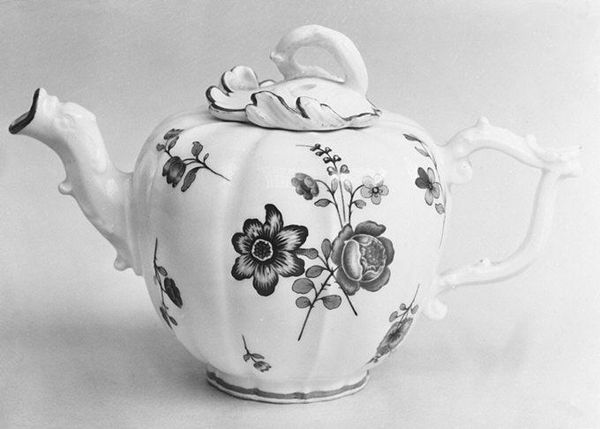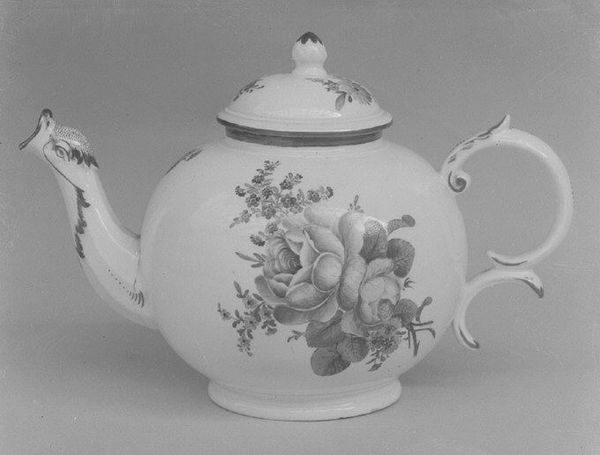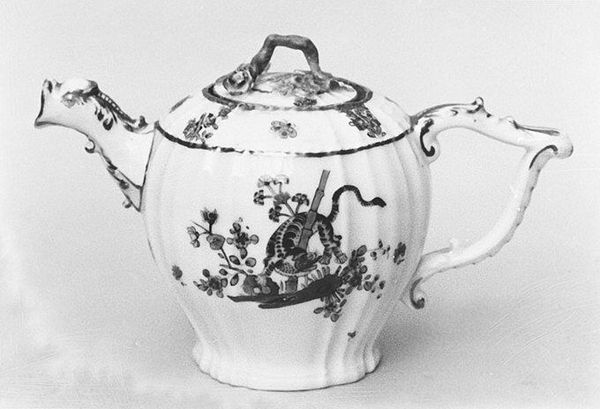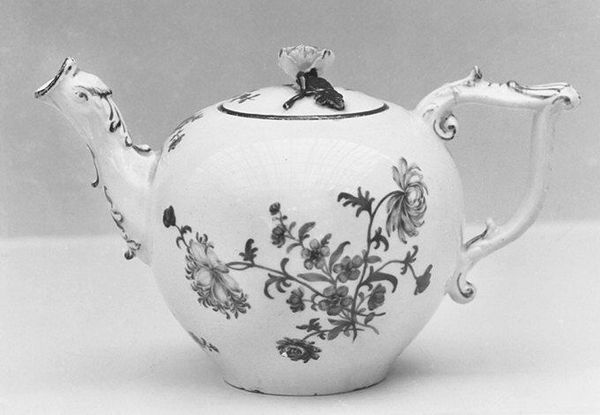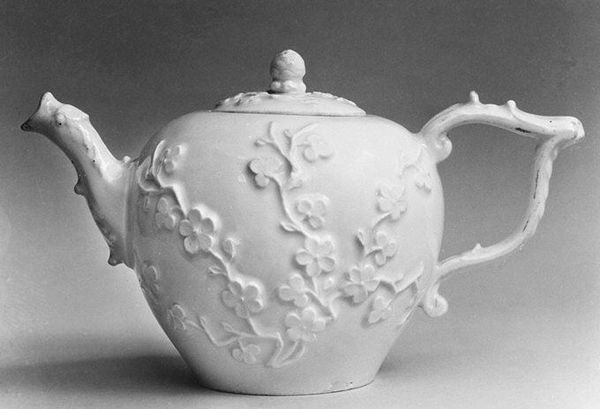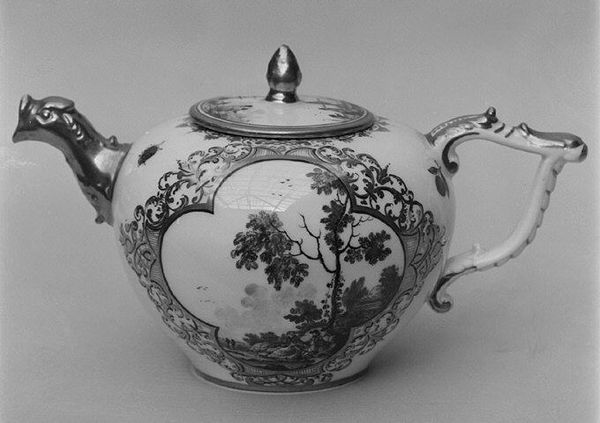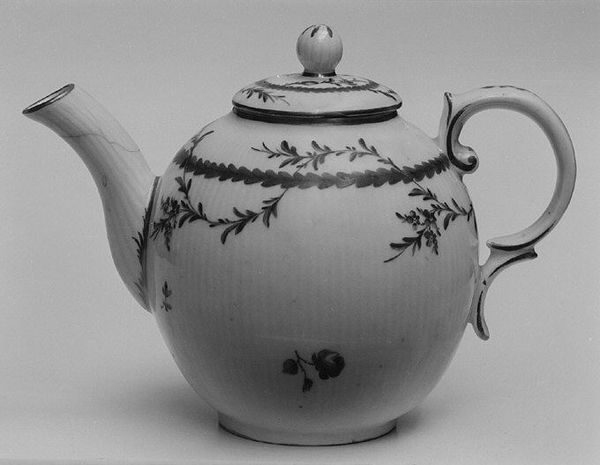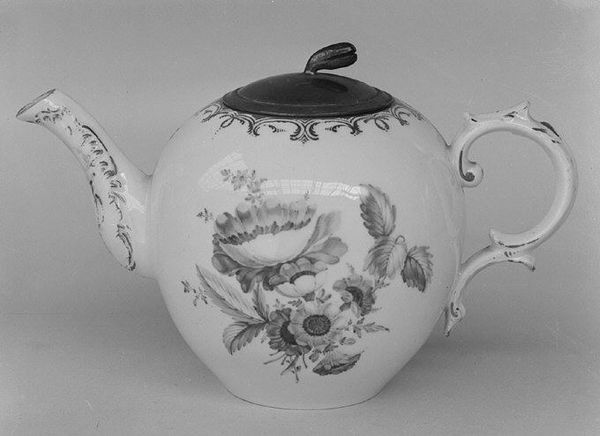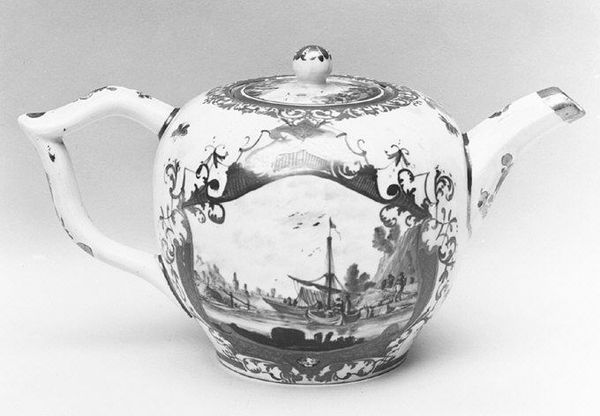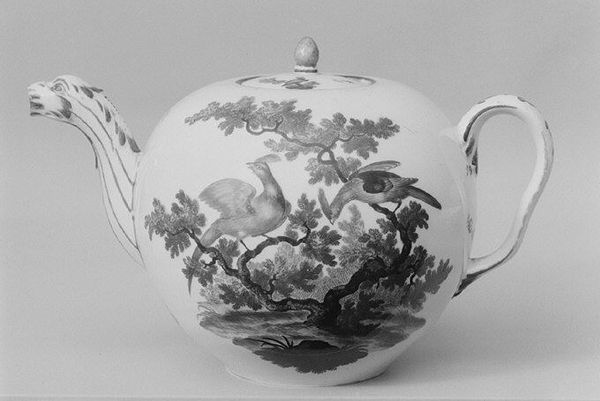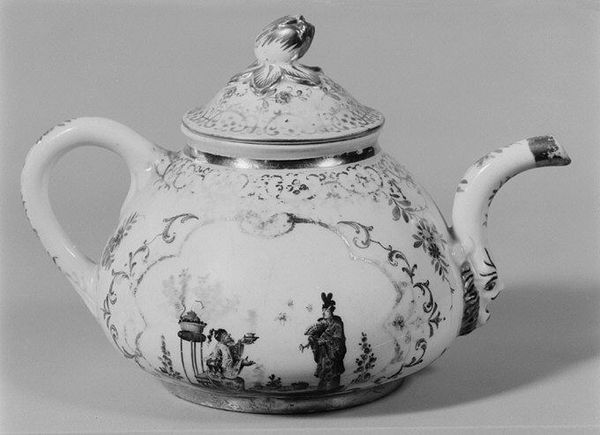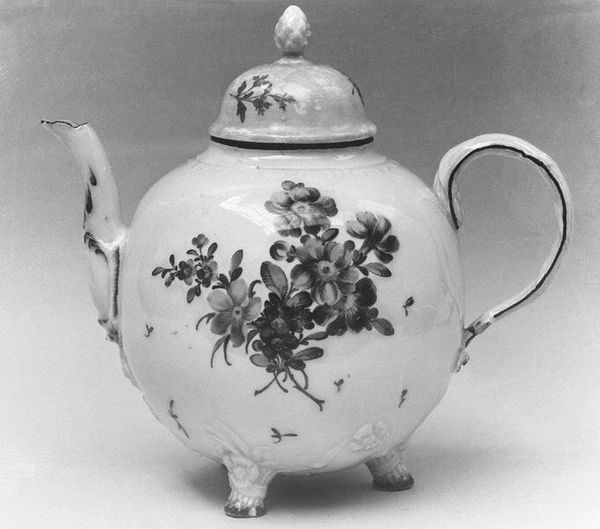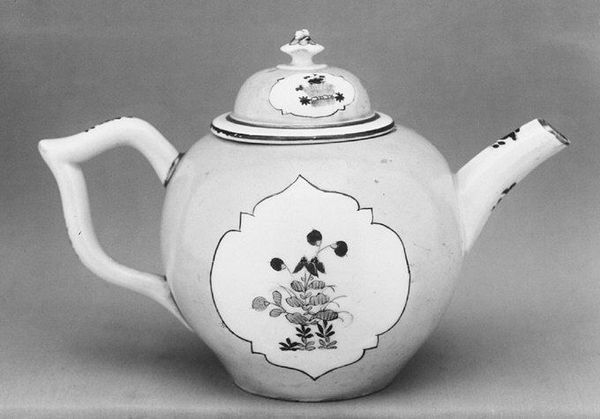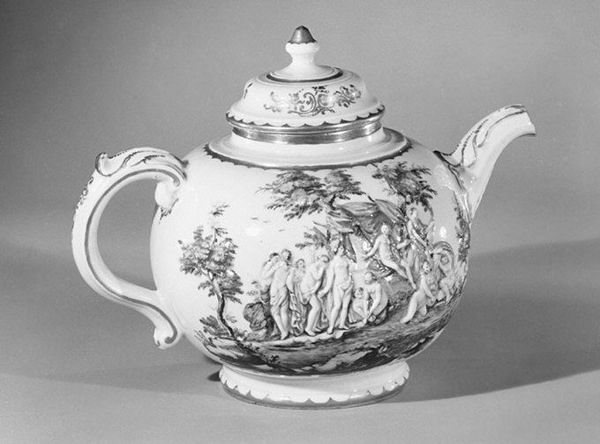
ceramic, porcelain, sculpture
#
ceramic
#
porcelain
#
sculpture
#
decorative-art
#
rococo
Dimensions: Height: 4 1/8 in. (10.5 cm)
Copyright: Public Domain
Curator: Ah, this little teapot—it exudes such delicate charm! It immediately evokes scenes of genteel sociability and refined taste, doesn't it? Editor: It certainly does. You know, at first glance, I'm struck by how simple yet elegant it is. The shape is classic, almost spherical, adorned with these beautifully rendered floral motifs. The whole effect is just so…peaceful. Curator: This piece, made by the Fürstenberg Porcelain Manufactory, likely sometime between 1755 and 1775, epitomizes Rococo sensibilities in porcelain. Notice the intricate floral swags and scattered blooms, a celebration of the natural world favored during this period. Editor: The placement of the flowers seems carefully considered, leading the eye around the pot in a very deliberate fashion. I think, unconsciously, it evokes associations of natural cycles and beauty, mirroring the brief time span of blooming itself. Do you read those connotations into its composition? Curator: Absolutely! Beyond simple decoration, such emblems communicated much to its owner and those observing. Serving tea from such a vessel elevated the mundane to something altogether more symbolic – an embodiment of leisure, elegance, and connection with a world deemed both beautiful and orderly. And, as the practice of tea drinking grew throughout European society, so did the visual vocabulary associated with these delicate tea services, including moral values. Editor: I never considered that teapots can imply or instruct behaviors. This is displayed here at the Metropolitan Museum of Art in New York City. I find it intriguing to consider it now, detached from its original social context. Does that lessen its cultural impact? Curator: Not necessarily. While context always matters, an object's symbolic power shifts over time. We read into it from our current vantage. To behold this teapot, now, we must reconsider this type of luxury ware which often symbolized empire and colonialism and slavery; thus our aesthetic joy must contend with the historical truth behind such things. Editor: So, it prompts a more critical engagement with history, which makes it something beyond simply pretty or delicate. The design still whispers, though, of an age valuing detail, ornamentation, and nature… all filtered, of course, through a lens of aristocratic privilege. Curator: Precisely! An object like this is an excellent vessel through which to examine social and aesthetic ideals, tracing continuities—and, more crucially, discontinuities—in our cultural memory. Editor: Indeed. Thanks to its presentation and cultural survival, even something as straightforward as a teapot can brew complexity into our present understandings.
Comments
No comments
Be the first to comment and join the conversation on the ultimate creative platform.
